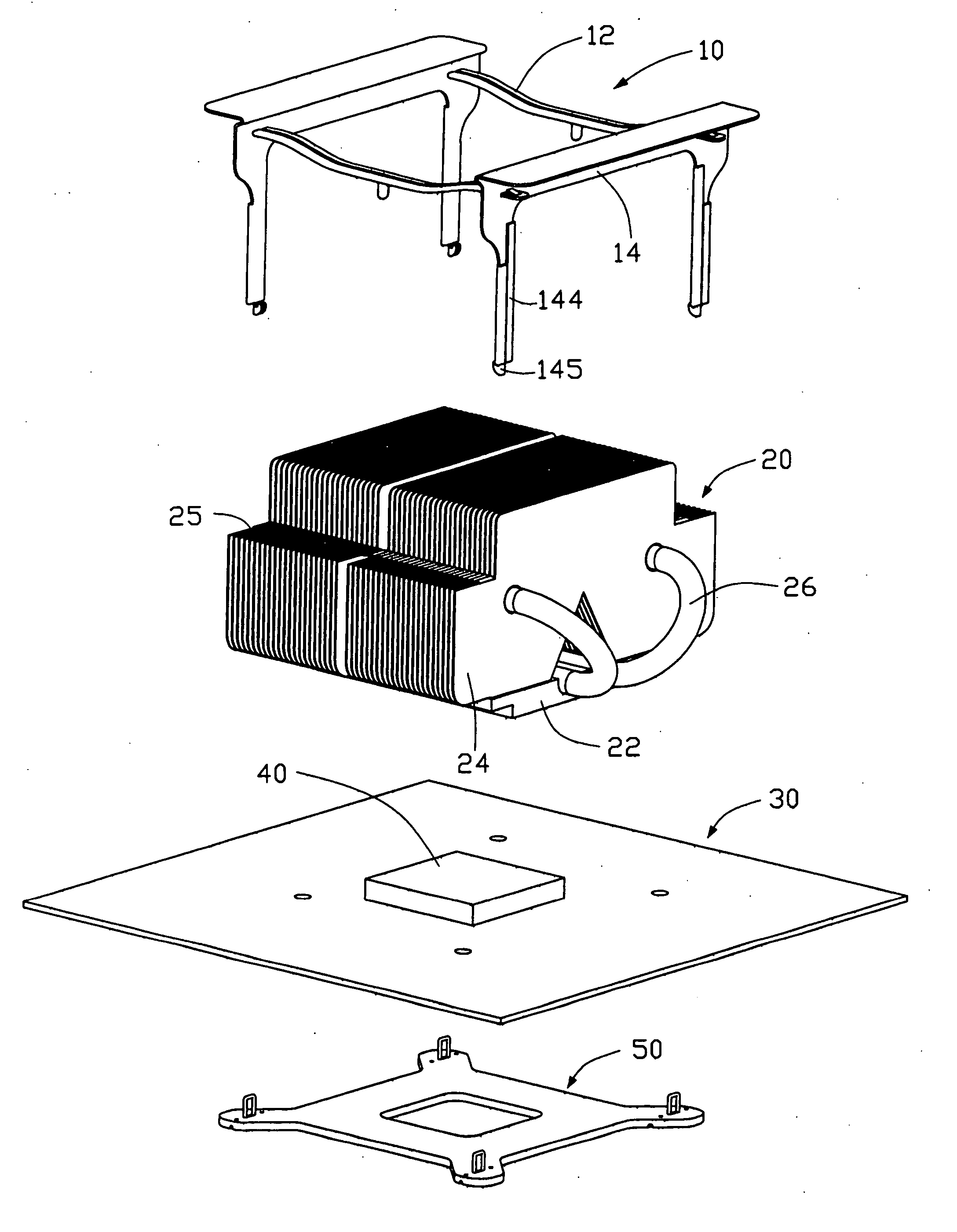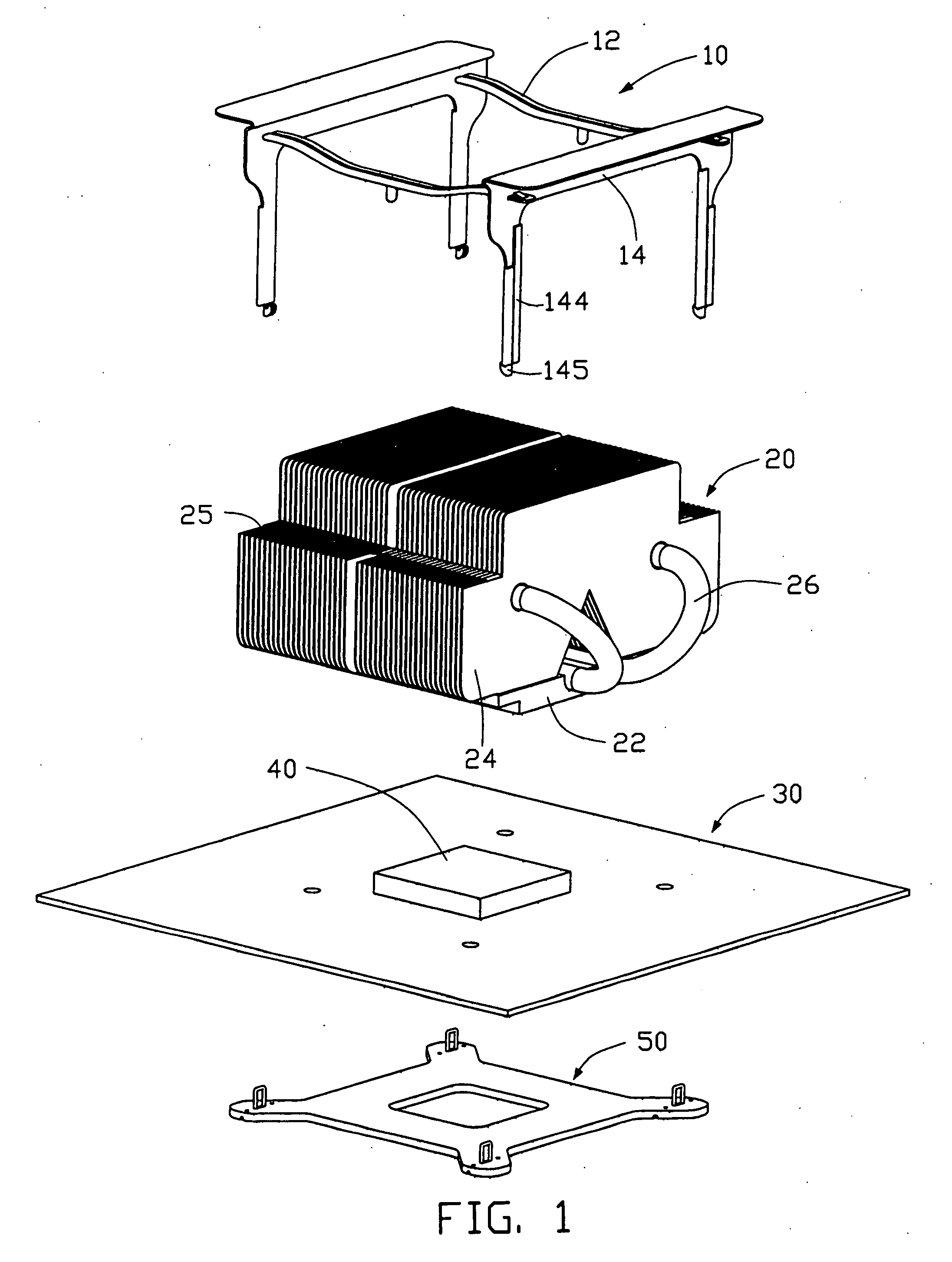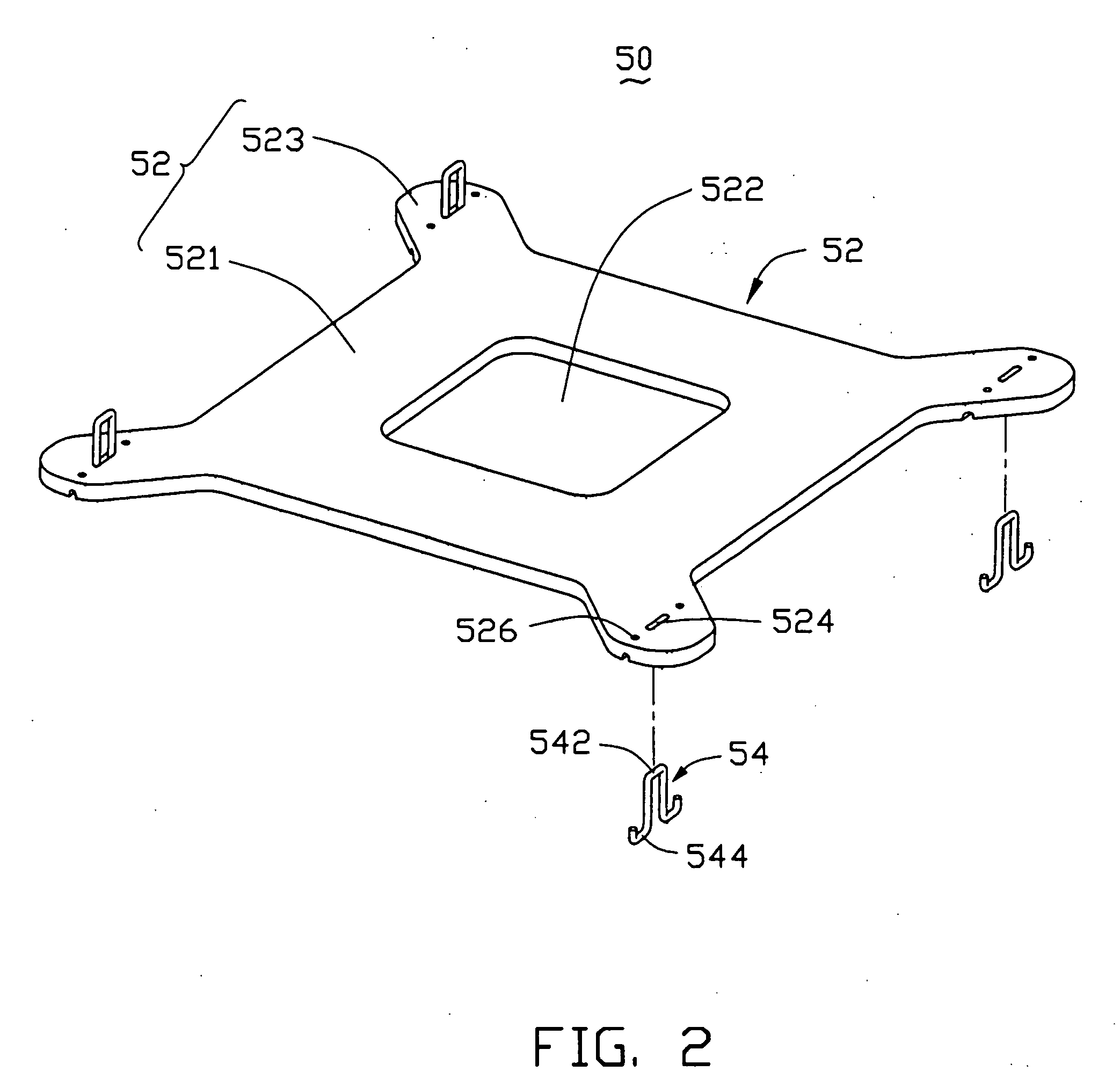Heat sink retention device
a technology of retention device and heat sink, which is applied in the direction of lighting, heating apparatus, and semiconductor/solid-state device details, etc., can solve the problems of unsteady mounting, difficult to reliably retain such an increscent large heat sink to the socket, and increase the mass of the heat sink, etc., to achieve convenient fabrication and operation.
- Summary
- Abstract
- Description
- Claims
- Application Information
AI Technical Summary
Benefits of technology
Problems solved by technology
Method used
Image
Examples
Embodiment Construction
[0019] In the following detailed description of the invention, reference is made to the accompanying drawings which form a part thereof, and in which is shown, by way of illustration, specific embodiments in which the invention may practiced. The embodiment is described in sufficient detail to enable those skilled in the art to practice the invention. Other embodiments may be utilized and structural, logical changes may be made without departing from the spirit of the present invention.
[0020] Referring to FIG. 1, a heat sink retention device, accompanying with a heat sink 20 and a printed circuit board 30 on which a processor 40 is mounted, in accordance with the present invention is illustrated. The retention device comprises a clip 10 for securing the heat sink 20 and a back plate 50 engaged with the clip 10.
[0021] The heat sink 20 comprises a metal base 22 for contacting with and absorbing heat from the processor 40, a plurality of fins 24 disposed on the base 22 and several he...
PUM
 Login to View More
Login to View More Abstract
Description
Claims
Application Information
 Login to View More
Login to View More - R&D
- Intellectual Property
- Life Sciences
- Materials
- Tech Scout
- Unparalleled Data Quality
- Higher Quality Content
- 60% Fewer Hallucinations
Browse by: Latest US Patents, China's latest patents, Technical Efficacy Thesaurus, Application Domain, Technology Topic, Popular Technical Reports.
© 2025 PatSnap. All rights reserved.Legal|Privacy policy|Modern Slavery Act Transparency Statement|Sitemap|About US| Contact US: help@patsnap.com



